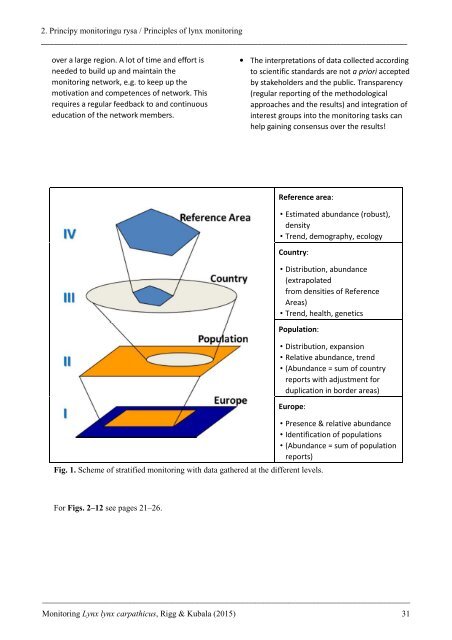Monitoring_Lynx-lynx-carpathicus
Monitoring_Lynx-lynx-carpathicus
Monitoring_Lynx-lynx-carpathicus
Create successful ePaper yourself
Turn your PDF publications into a flip-book with our unique Google optimized e-Paper software.
2. Princípy monitoringu rysa / Principles of <strong>lynx</strong> monitoring________________________________________________________________________________________over a large region. A lot of time and effort isneeded to build up and maintain themonitoring network, e.g. to keep up themotivation and competences of network. Thisrequires a regular feedback to and continuouseducation of the network members.• The interpretations of data collected accordingto scientific standards are not a priori acceptedby stakeholders and the public. Transparency(regular reporting of the methodologicalapproaches and the results) and integration ofinterest groups into the monitoring tasks canhelp gaining consensus over the results!Reference area:• Estimated abundance (robust),density• Trend, demography, ecologyCountry:• Distribution, abundance(extrapolatedfrom densities of ReferenceAreas)• Trend, health, geneticsPopulation:• Distribution, expansion• Relative abundance, trend• (Abundance = sum of countryreports with adjustment forduplication in border areas)Europe:Fig. 1. Scheme of stratified monitoring with data gathered at the different levels.• Presence & relative abundance• Identification of populations• (Abundance = sum of populationreports)For Figs. 2–12 see pages 21–26.________________________________________________________________________________________<strong>Monitoring</strong> <strong>Lynx</strong> <strong>lynx</strong> <strong>carpathicus</strong>, Rigg & Kubala (2015) 31


